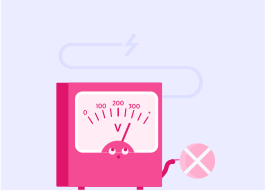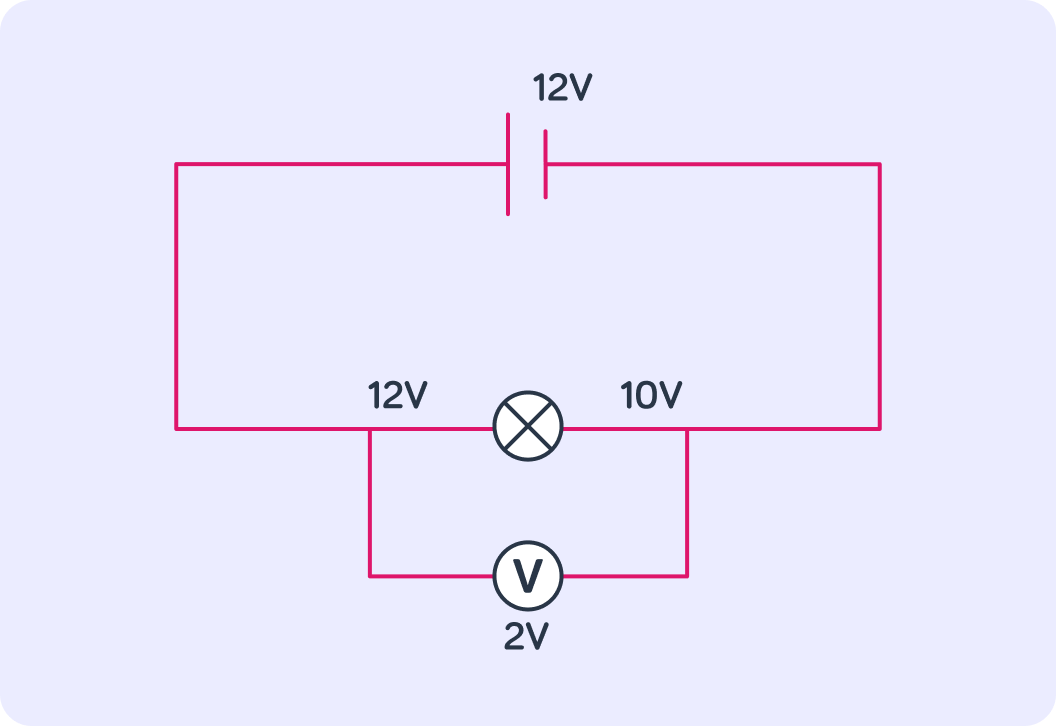YOU ARE LEARNING:
Potential Difference

Potential Difference
Voltage is the energy required to move a charged particle around a whole circuit. The potential difference is the change in voltage across two points in a circuit.
What does voltage provide in a circuit?

Current is the movement of ___________ around a circuit.

What is the correct unit for energy?

What is the correct unit for the charge of a particle?

If the voltage is the energy needed to move a charged particle, and charged particles are measured in coulombs, what do you think a volt is?

This image shows a circuit with a bulb. A battery provides the circuit with a voltage of 12 V.
The voltage measured at any point before the bulb would be 12 V. If we measured it at any point after the bulb, it would be 10 V. The voltmeter gives a reading of 2 V because it calculates the potential difference across the component, in this case the bulb.

Voltage is the energy required to move a charged particle around the whole circuit. Potential difference is the energy required to move a charged particle around a part of the circuit.
We find the potential difference by using a voltmeter to measure the voltage across a component. Energy is measured in joules and charge is measured in coulombs so the volt is actually joule per coulomb, V=JC−1 .
Which one do you think is a source of voltage or potential difference in a circuit?

What type of energy is held inside a battery or cell?

A cell or battery contains chemical energy which when released, provides the energy needed to move electrons around a circuit to create a current. The battery (or cell) is the source of the potential difference. Note that this can only happen around a closed circuit. If the circuit is incomplete or open, the current will not flow.
Will the potential difference be the same at every point in a circuit?

The potential difference is the difference in voltage across two points in a circuit. For example, you might want to measure how much energy is being used across one or multiple components in a circuit, and potential difference allows you to do this.
